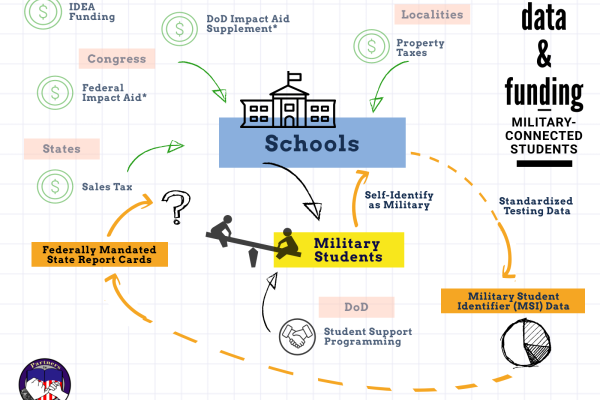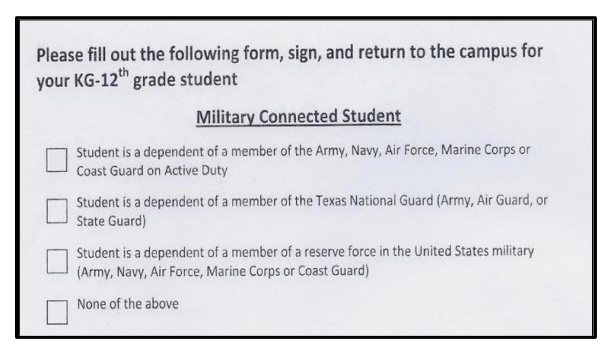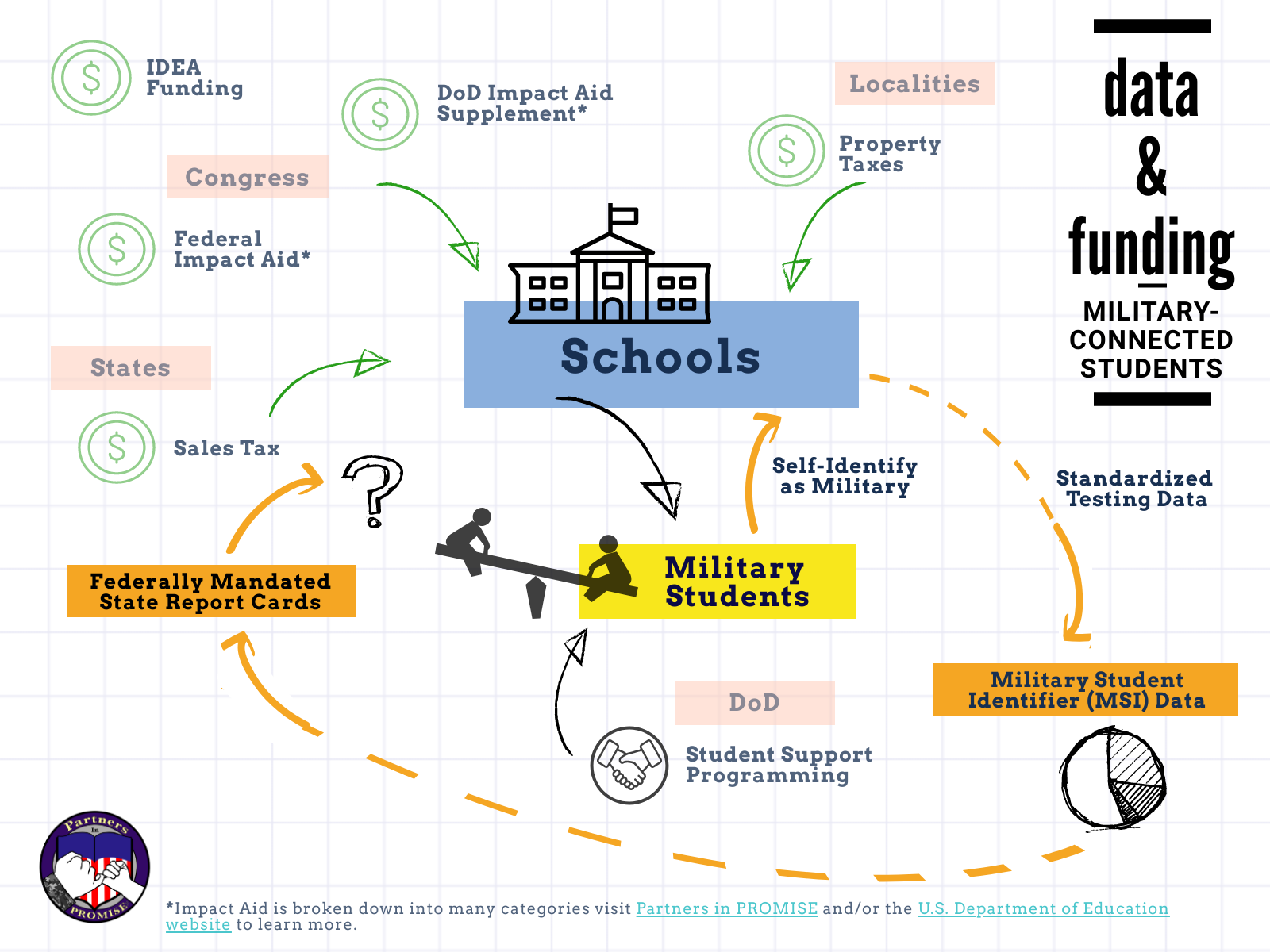
What You Need to Know: Impact Aid & the Military Student Identifier
| Resource Partners, Resources
Watch the Interview!
Partners in PROMISE COO, Jennifer Barnhill interviewed Josephine Amato of the Military-Kids Special Needs Alliance. In addition to being a member of the EFMP Coalition Josephine is an advocate and researcher and her knowledge of Impact Aid is unparalleled.
Why Do School Districts Need to Know Your Military Status?
By Jennifer Barnhill – originally published via Military Spouse Magazine
Do you wonder why you are asked your military status when your child starts a new school? The answer is twofold, one is to discover what impact military service has on the education of military children through the Military Student Identifier. The other is so schools can collect Impact Aid. While these are two separate programs they are linked in a disjointed way.
What Is the Military Student Identifier?

The “Military Student Identifier” (MSI) was a datapoint established as part of the Every Student Succeeds Act (ESSA) of 2015. The stated purpose of ESSA is to “improve academic achievement of the disadvantaged.” This starts by identifying students from vulnerable segments of the population. Military children were identified, due to their struggles with disrupted learning and social-emotional struggles as a result of frequent moves.
This MSI data relies upon military-connected families to self-report military directly to their schools annually. The purpose of the MSI is to “provide local educators with quality, actionable data concerning their military-connected students.” However, there are few state-level MSI reports. This may be due to the fact that the “report cards” detailing military-connected student outcomes are collected at the state level.
Current federal, state and local report cards highlight student outcomes in a variety of subject areas. While data on other vulnerable populations are reported, covering gender, racial and economic-based gaps, military data is often omitted. Additionally, because the report cards are “non-regulatory,” states are not mandated to follow a specific formula of reporting, making data collected inconsistent.
“The data from the military identifier is not being used in the manner it is legally required to be used” said Josephine Amato, MSW, Director Military Kids Special Education Alliance (MKSEA). According to Amato, states collect data in alternating years and grades, resulting in an incomplete picture of military education. It is entirely possible due to PCS rotations that a single military student may never be included in reported data. However, even with these gaps, the data collected on the vulnerable military student population could be used to improve outcomes.
What Is Impact Aid?

In many cases when you tell a school you are a military family; they use that information to apply for Impact Aid. These federal funds are available to schools that serve military-connected students with higher amounts going to those with special education needs.
There are four levels of Impact Aid that is paid for military-connected children:
- Payments for federal property
- Basic support payments (to help meet the academic standards)
- Students with disabilities
- Construction
If you do a quick internet search about Impact Aid you will find that it is designed to provide extra funding to local schools to make up for lost property tax revenue. While this may be an accurate summary, it omits the original purpose of the law that also intends funds be allocated “to help such children meet the same challenging State academic standards.”
This stated purpose cements the relationship between MSI data and funding. According to Amato school districts “are supposed to be looking where the kids are [academically] and implementing the Impact Aid funds to see if extra supports are needed.” However, it is unclear how Impact Aid is spent because, like the MSI, Impact Aid funding is not tracked.
Data and Funding Benefit Military Kids
When your school receives Impact Aid funding and understands its population, everyone wins. Districts in Navy towns like San Diego use this funding to support transition programming, counseling services, extracurricular clubs, special education supports and more. These programs help to put military students on a level playing field with civilian students.
“We want to embrace our military families” said Sean Keller, Principal of Robert H Down Elementary School in Pacific Grove, California. This top rated school does not collect Impact Aid or have military-specific programming, but strives to serve its military-connected students. Keller wishes that the DoD-funded military School Liaison Officers (SLO) would “reach out to our districts more often,” indicating that a proactive relationship between these roles could help close the military-civilian knowledge gap in smaller military communities. In districts where one SLO serves multiple schools, community outreach often takes a backseat to fielding complaints.
Find Out For Yourself
Just because a school has military-connected students doesn’t mean that it collects Impact Aid funding or that it utilizes the MSI. Until the legally required reporting of military student data is the gold standard, accountability falls to individuals. To find out if your school gets Impact Aid visit this website.
Want to know more about how military children historically perform in your district? Request a copy of the MSI data from your local department of education.





Leave a Reply